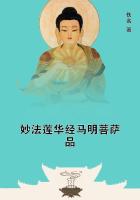Now Saxo states in his Preface that he "has taken care to follow the statements ("asserta") of Absalon, and with obedient mind and pen to include both his own doings and other men's doings of which he learnt."The latter books are, therefore, to a great extent, Absalon's personally communicated memoirs.But we have seen that Absalon died in 1201, and that Bk.xi, at any rate, was not written after 1202.It almost certainly follows that the latter books were written in Absalon's life; but the Preface, written after them, refers to events in 1208.Therefore, unless we suppose that the issue was for some reason delayed, or that Saxo spent seven years in polishing -- which is not impossible -- there is some reason to surmise that he began with that portion of his work which was nearest to his own time, and added the previous (especially the first nine, or mythical) books, as a completion, and possibly as an afterthought.But this is a point which there is no real means of settling.We do not know how late the Preface was written, except that it must have been some time between 1208 and 1223, when Anders Suneson ceased to be Archbishop; nor do we know when Saxo died.
HISTORY OF THE WORK.
Nothing is stranger than that a work of such force and genius, unique in Danish letters, should have been forgotten for three hundred years, and have survived only in an epitome and in exceedingly few manuscripts.The history of the book is worth recording.Doubtless its very merits, its "marvellous vocabulary, thickly-studded maxims, and excellent variety of images," which Erasmus admired long afterwards, sealed it to the vulgar.A man needed some Latin to appreciate it, and Erasmus'
natural wonder "how a Dane at that day could have such a force of eloquence" is a measure of the rarity both of the gift and of a public that could appraise it.The epitome (made about 1430)shows that Saxo was felt to be difficult, its author saying:
"Since Saxo's work is in many places diffuse, and many things are said more for ornament than for historical truth, and moreover his style is too obscure on account of the number of terms ("plurima vocabula") and sundry poems, which are unfamiliar to modern times, this opuscle puts in clear words the more notable of the deeds there related, with the addition of some that happened after Saxo's death." A Low-German version of this epitome, which appeared in 1485, had a considerable vogue, and the two together "helped to drive the history out of our libraries, and explains why the annalists and geographers of the Middle Ages so seldom quoted it." This neglect appears to have been greatest of all in Denmark, and to have lasted until the appearance of the "First Edition" in 1511.
The first impulse towards this work by which Saxo was saved, is found in a letter from the Bishop of Roskild, Lave Urne, dated May 1512, to Christian Pederson, Canon of Lund, whom he compliments as a lover of letters, antiquary, and patriot, and urges to edit and publish "tam divinum latinae eruditionis culmen et splendorem Saxonem nostrum".Nearly two years afterwards Christian Pederson sent Lave Urne a copy of the first edition, now all printed, with an account of its history."I do not think that any mortal was more inclined and ready for" the task."When living at Paris, and paying heed to good literature, I twice sent a messenger at my own charges to buy a faithful copy at any cost, and bring it back to me.Effecting nothing thus, I went back to my country for this purpose; I visited and turned over all the libraries, but still could not pull out a Saxo, even covered with beetles, bookworms, mould, and dust.So stubbornly had all the owners locked it away." A worthy prior, in compassion offered to get a copy and transcribe it with his own hand, but Christian, in respect for the prior's rank, absurdly declined.At last Birger, the Archbishop of Lund, by some strategy, got a copy, which King Christian the Second allowed to be taken to Paris on condition of its being wrought at "by an instructed and skilled graver (printer)." Such a person was found in Jodocus Badius Ascenshls, who adds a third letter written by himself to Bishop Urne, vindicating his application to Saxo of the title Grammaticus, which he well defines as "one who knows how to speak or write with diligence, acuteness, or knowledge." The beautiful book he produced was worthy of the zeal, and unsparing, unweariable pains, which had been spent on it by the band of enthusiasts, and it was truly a little triumph of humanism.Further editions were reprinted during the sixteenth century at Basic and at Frankfort-on-Main, but they did not improve in any way upon the first; and the next epoch in the study of Saxo was made by the edition and notes of Stephanus Johansen Stephanius, published at Copenhagen in the middle of the seventeenth century (1644).
Stephanius, the first commentator on Saxo, still remains the best upon his language.Immense knowledge of Latin, both good and bad (especially of the authors Saxo imitated), infinite and prolix industry, a sharp eye for the text, and continence in emendation, are not his only virtues.His very bulkiness and leisureliness are charming; he writes like a man who had eternity to write in, and who knew enough to fill it, and who expected readers of an equal leisure.He also prints some valuable notes signed with the famous name of Bishop Bryniolf of Skalholt, a man of force and talent, and others by Casper Barth, "corculum Musarum", as Stephanius calls him, whose textual and other comments are sometimes of use, and who worked with a MS.of Saxo.The edition of Klotz, 1771, based on that of Stephanius, I have but seen;however, the first standard commentary is that begun by P.E.













